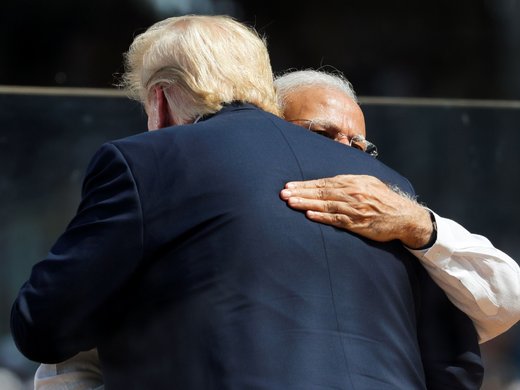In an earlier post, this blog discussed Beijing’s decision to scrap the one-child policy that for three decades restricted couples to one child to ensure “the fruits of economic growth are devoured by the population.” Since that post, a number of commentators have examined Chinese growth, including Harvard economist Robert Barro, who wrote about China’s growth prospects.
How should we think about these issues? Economists are sometimes (frequently!) criticized for the lack of realism of their models. For the avoidance of doubt: I am not suggesting that what follows is an adequate or sufficient explanation of the complex process of growth in which China has been engaged. This isn’t an essay on methodology, however, so let me respond to that charge by saying that models have to be simple if they are to provide new insight into a problem. Otherwise, what is the point?
With that caveat in mind, we can think of the problem in terms of Solow’s justly-celebrated model of economic growth. As Paul Krugman would say, this post is “wonkish.” (Non-economists may stop reading at this point; economists will undoubtedly uncover errors in my presentation — my apologies to both groups.)
The Solow model has three key three elements:
1. A constant-returns-to-scale production function that describes how capital and labour combine to produce output. The assumption of constant returns, under which increasing both capital and labour by some proportion will increase output by the same proportion, allows us to work in per capita terms.
2. A simple per capita savings function that is defined in terms of a given marginal propensity to save, such that savings are a fraction of total output. Since we are assuming a closed economy (not unreasonable for China between 1949-1979) and no government expenditures (remember, the objective here is to simplify), output is either consumed or saved. And since capital is the only asset (there is no money), all that is saved goes toward investment in more capital.
3. An investment schedule that shows the investment needed to offset the effects of depreciation and population growth on the level of capital.
While all this may seem rather complicated and technical, it isn’t: #1 is the familiar “curved” production function from Econ 101 reflecting diminishing productivity in terms of per capita capital — adding more capital increases output, but at a diminishing rate; #2 is a simple transformation of #1; and #3 is a straight line from the origin whose slope is given by the sum of the depreciation rate and population growth rate. Equilibrium is determined by the intersection of #2 and #3, which gives a steady-state level of per capita capital that, in turn, determines output given by #1.
With these preliminaries, we can consider the impact of the one-child policy. The first and most obvious impact, of course, is on the rate of population growth. Reducing the rate of population growth increases the steady-state level of capital per worker, since given the fixed savings rate, more of the savings (= investment) goes to increasing the amount of capital each worker has to work with. This unleashes a burst of growth as the economy moves along production function between the old and the new steady-state level of per capita capital. At the end of the adjustment period, the new steady-state level of consumption, is higher than the initial level consistent with the authorities’ objective of “delivering the goods” (and promoting their legitimacy if, as some have argued, the regime’s political legitimacy rests on its ability to raise living standards).
But is that all that is going on?
The answer — clearly — is “no.” A big part of China’s success story lies in its opening to the rest of the world. In 1979, after 30 years of financial and economic autarky, China “opened for business.” The simple graphical treatment of the Solow model sketched above can’t capture the nuances of the effects of this — remember, we have assumed a closed economy. Incorporating government and net exports in a diagrammatic exposition would lead to clutter and confusion (mostly on my part). That being said, please indulge me in more than my usual amount of "hand waving." Caveat lector.
A key element of China’s opening was gaining access to technology. The acquisition of technology was achieved directly, through, say, licensing agreements and indirectly, as foreign firms built factories and a base from which to export to the rest of the world.
How would that new technology be depicted in the Solow model (actually, the Solow-Swan model, after Trevor Swan, who independently developed neoclassical growth theory)?
If the new technology is superior, a new production function would be shown graphically as lying everywhere above the initial production function. At the old savings/investment rate, there is no change in the steady-state level of capital. Yet steady-state consumption is potentially higher — given by the distance between the new and old production functions at that steady-state level of capital.
Is this an equilibrium? Not really. Absent any intervention, savings would increase in proportion with the increased output associated with the adoption of new technology. However, what if the government held consumption constant using whatever means necessary (this is still a society in which central planning, while much less pervasive than 30 years ago, remains a potent force in the allocation of scarce resources). In effect, assume the government appropriates the increased output. Perhaps it is helpful to think of the output as being traded abroad with the proceeds accumulated as foreign exchange reserves.
But do such measures constitute good policy from society’s perspective? The combination of the one-child policy and the opening of the economy has generated growth. Moreover, in the real world (apart from our stylized model), the accumulation of foreign exchange reserves may have enabled China to avoid disruptions to growth from, say, the international financial crisis. Average consumption may have been lower, but that might have been justified if the variance of consumption was also lower.
To assess whether the policy in our hypothetical model was in fact optimal, we need a benchmark with which to judge. That metric is the Golden Rule level of consumption. This is found by asking what is the level of capital per worker that maximizes consumption per capita.
The starting point is to recognize that adding more capital isn’t always a good thing. The higher the level of capital, the more output that is required to offset the effects of depreciation and population growth. To maximize per capita consumption, the marginal productivity of per capita capital must equal the sum of the rate of depreciation and the rate of population growth.
The question is whether the policy combination led to too high a steady-state level of capital. This is ultimately an empirical question. It is important to note, though, there is nothing in the Solow model that rules out the possibility — it is entirely possible to accumulate excess capital. In this respect, there are numerous reports of excessive public and private investment, including a 2013 IMF working paper.
Of course, if there is excessive capital, there is nothing in the model that would ensure the Golden Rule is attained. In that case, savings are simply too high. To achieve the Golden Rule, there must be a rebalancing from savings to domestic consumption. Interestingly, that is exactly what the authorities are attempting to do. Consider recent initiatives:
- first, a relaxation of one-child policy, which could be expected to increase the amount of investment needed simply to sustain a given level of capital;
- second, a relaxation of capital controls to permit domestic residents to invest in foreign assets and diversify wealth holding; and
- third, removing other controls (formal or informal) that limit consumption opportunities — which in our simple model, reduces the marginal propensity to consume.
To be clear: I am not proposing that this simplified analysis based on the Solow-Swan model adequately explains recent Chinese growth. It can, however, help identify key factors and expected outcomes — such as a slowing of growth as the economy converges on its new steady state equilibrium. That process is, arguably, in progress as growth rates steadily drop. This slowdown doesn’t presage a crisis; merely the effects of higher capital accumulation as predicted by the model.
At the same time, it is important to acknowledge that much as been assumed away here. For example, there is no optimization; no money, and no explicit government sector. Moreover, the critical role of the global economy, in providing a market for the remarkable expansion of Chinese industrial capacity, is ignored, along with the importance of the international financial architecture.
These issues will be addressed in the third installment of this series. Understanding them is necessary to navigate through the fog imparted by the New Age of Uncertainty.


